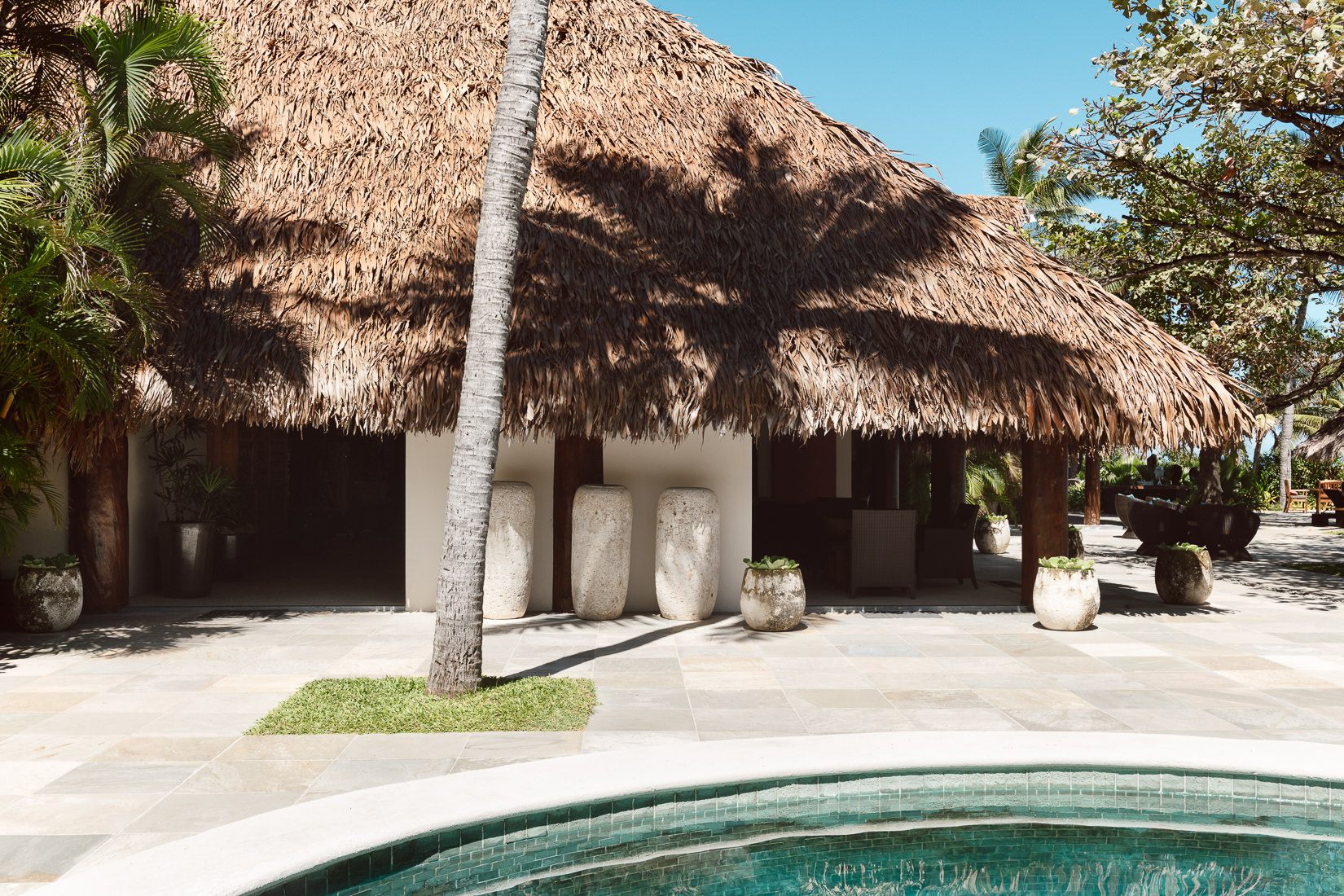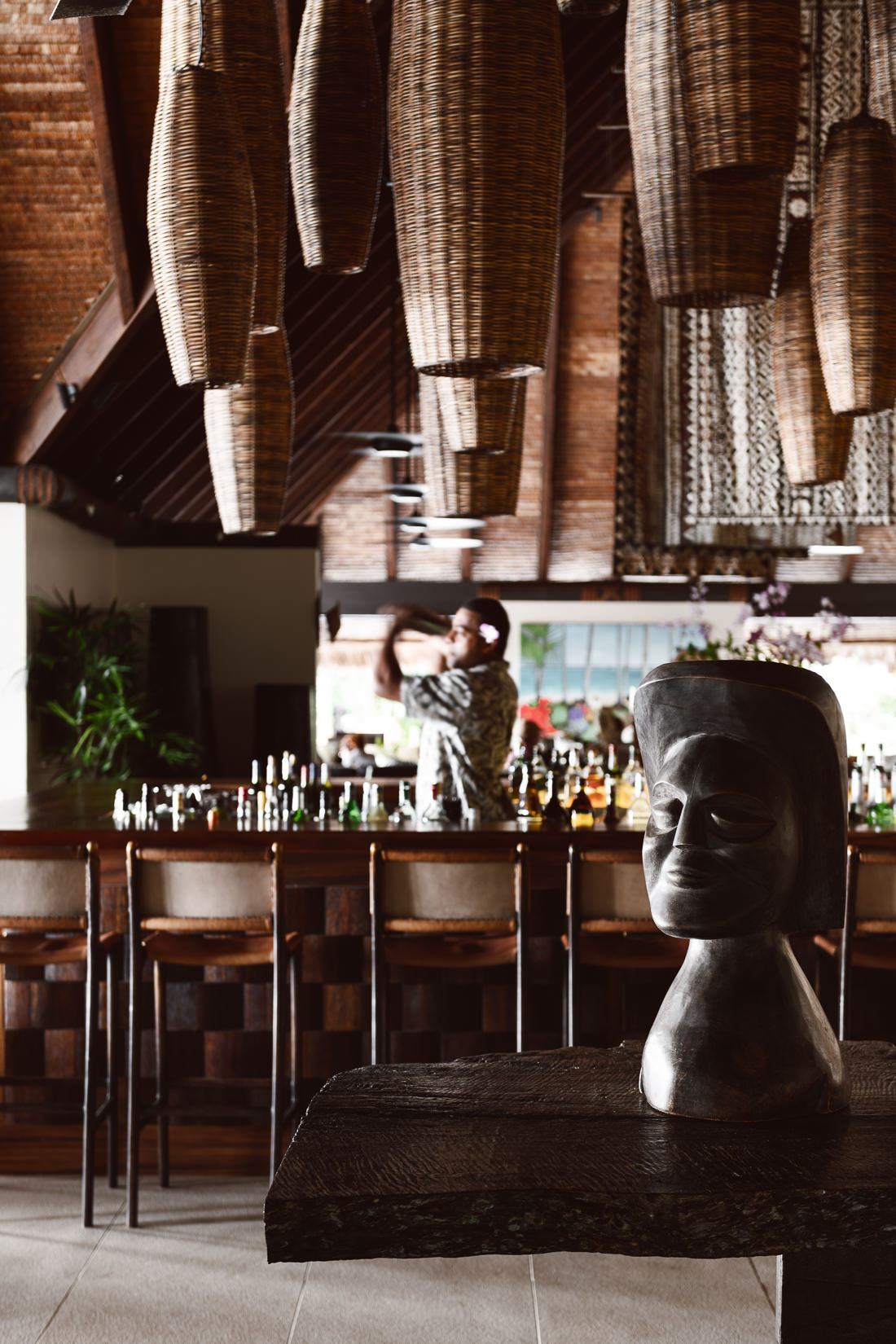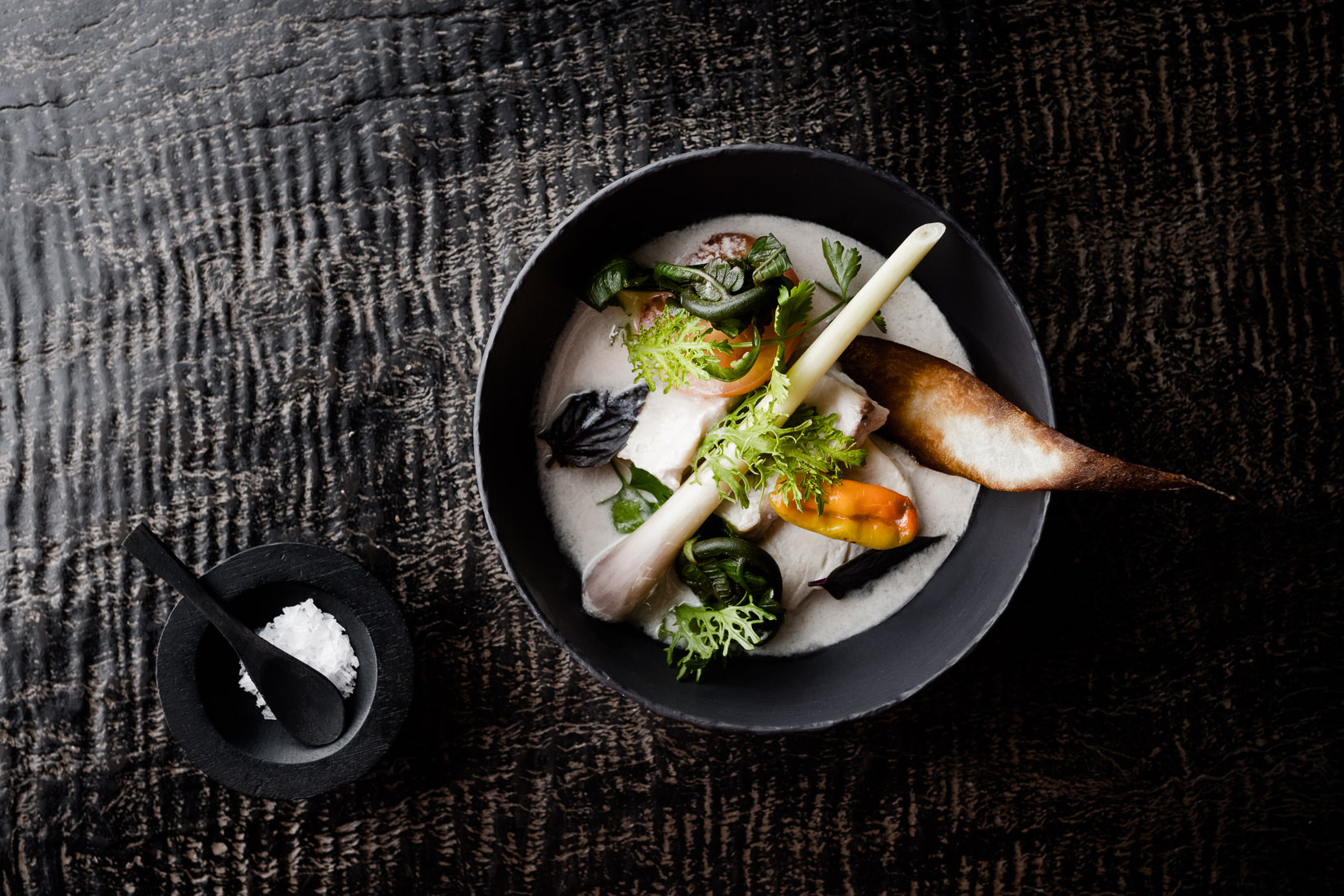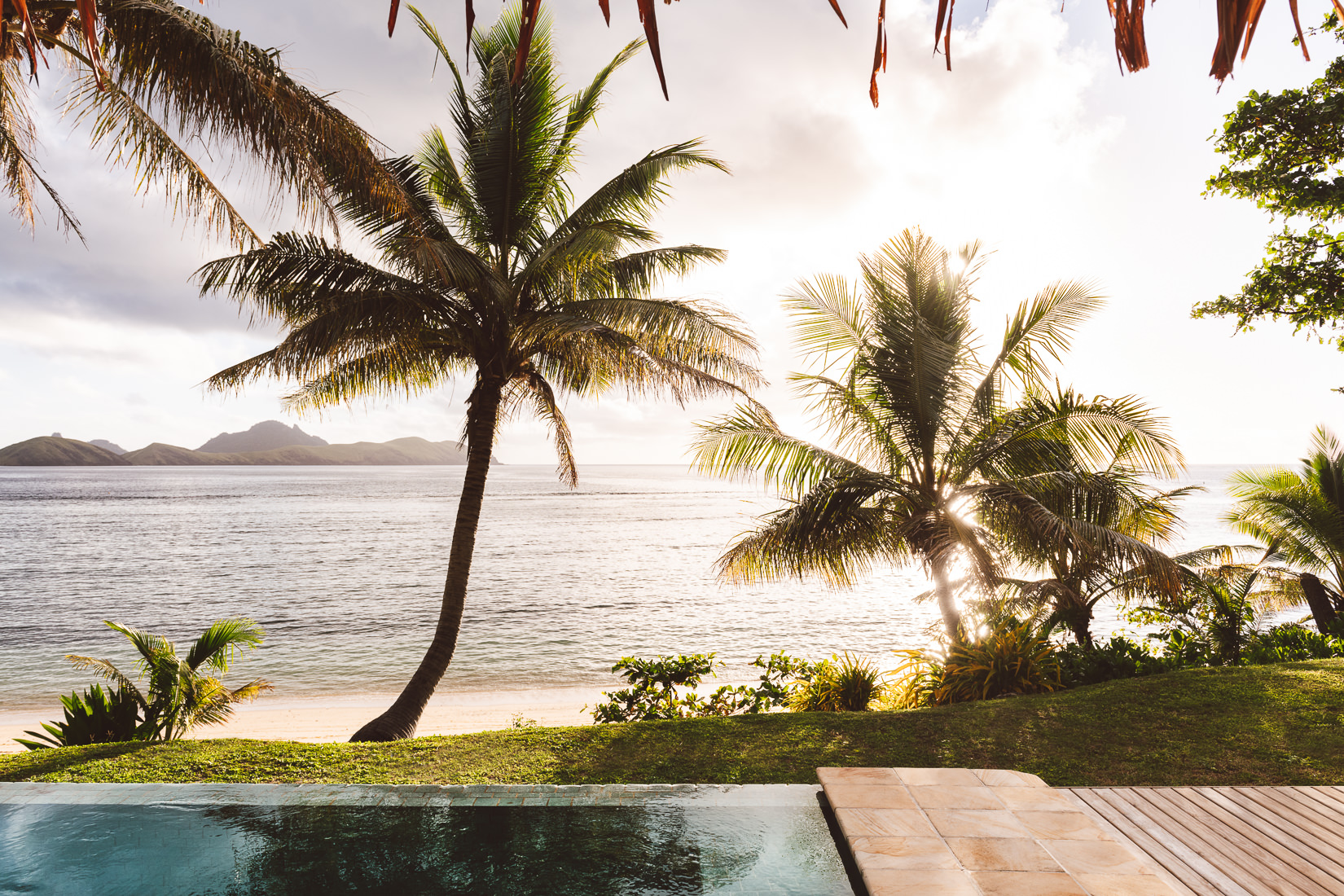In the great room at Tokoriki Island Resort, a series of giant masi cloths hang from the hardwood rafters, swaying gently in the breeze. Hand-crafted by artisans in the village of Vatulele, the cloths, which are seen as a connector between the spirit and living world, feature patterned designs that represent ideas of unity, welcome and special occasion.

Here, in this adults-only haven in the Mamanuca Islands, the everyday is a special occasion underpinned by the natural environment but supported by architectural and design sensibilities that play a significant role.
The scale of this central pavilion where guests gather to dine with an emblematic view – imagine coconut palms, white sand, crystalline water – is immense, but made intimate by a raw, organic material palette and decorative details that allow it to be as welcoming as the Fijian ‘bula’.
Impressive to think that this structure, which was strapped together by hand, has withstood decades of tropical tempests including, in 2016, Winston, the most intense cyclone ever recorded in the Southern Hemisphere.

When Australian owners Andrew and Yvonne Turnbull purchased the property in 1995, the skeleton of the great room was already here but the island itself was denuded of foliage – bare and barren. Over three decades, they have worked to build the infrastructure, bring lushness to the landscape and nurture a local team that has gained many accolades, most recently in the Condé Nast Traveler Readers’ Choice Awards being judged one of the Top 20 resorts in Australia and the Pacific.
Yvonne Turnbull has been instrumental in the creation of the interiors both in the communal spaces and the beachfront bures and villas, her eye for proportion and cohesiveness unwavering, her aesthetic a fusion of Fijian and contemporary design.

Taking her cue from the masi cloths, she commissioned three towering teak panels, decoratively carved with traditional patterns, to act as visual anchors within the main space, but her detail is evident in the accommodation too: adzed front doors feature fibre-bound handles, and the thick, rough-texture plaster walls allow alcoves where artisanal pottery and objects are displayed.
Beneath the pandanus-wrapped ceilings, the communal pavilion is a treasure box of dark timbers, woven furniture, organic linens and large-scale ornamental handicrafts. Works by local artist Sharon Light in sepia tones tie in with the theme.
For guests, the day often begins and ends here in the cool embrace of the immense gable. Plump down onto the oversized, black-cane sofas with a glass of French bubbles and a tropical fruit plate that is presented as art itself (an alternative to a floating breakfast in your own pool villa), contemplate a beach picnic after a diving excursion and return in the early evening to gather around the bar before dinner.

For as much as this is a retreat for romanticising, Tokoriki’s point of difference is a low-lit, amicable ambience that encourages pre-dinner conversation between parties. The ‘mingle’ bar, which took 22 men to carry inside, is at centre stage beneath a collection of barrel-shaped hanging lanterns, and it takes some determination to bypass.
Settle in on a cosy stool alongside fellow travellers from around the world to share the theatre of cocktail making. Sipping a lychee-laced vodka cooler or a bold Australian chardonnay from the curated wine list does more for international relations than any political accord.

Executive chef Tommy Lyons, who cut his teeth working in the kitchens of a Benedictine monastery and has behind-the-scenes experience of a Michelin-star restaurant, blends classical French, Asian and modern British techniques on the menu.
His focus is on clean flavours with good mouthfeel and visual modernity: Kokoda made with fresh coconut, the milk extracted by hand through muslin; pan-fried coral trout drizzled with parsley oil, sprinkled with South Seas Salt (a project born right here by the dive-masters during a Covid lockdown), garnished with tempura-dipped fiddle-head fern. And to follow? A Tokoriki signature dessert: homemade ‘Sandy’ ice-cream rolled in nut praline accompanied by a crackle of brandy snap and luscious Fiji coconut rum cream.

An after-dinner amble around the gardens brings the achievement of this resort into full focus. Between the infinity pool and the hillside now blanketed in foliage where a memorial cross to the original owner looks out to the forever horizon, there are many secret vignettes to discover. Capacious waterlily vessels that reflect the palms, an orchid nursery brimming with blooms, and a thatched stone chapel are strung out along the meandering path. Passing by, staff greet each guest personally by name. In Fijian Tokoriki means ‘stay’. It’s tempting.
Words: Claire McCall
Images: Supplied






